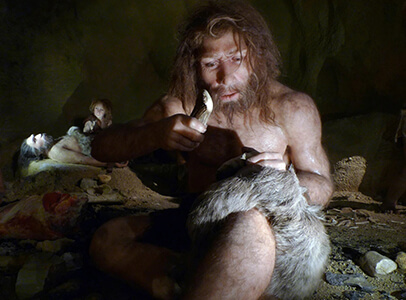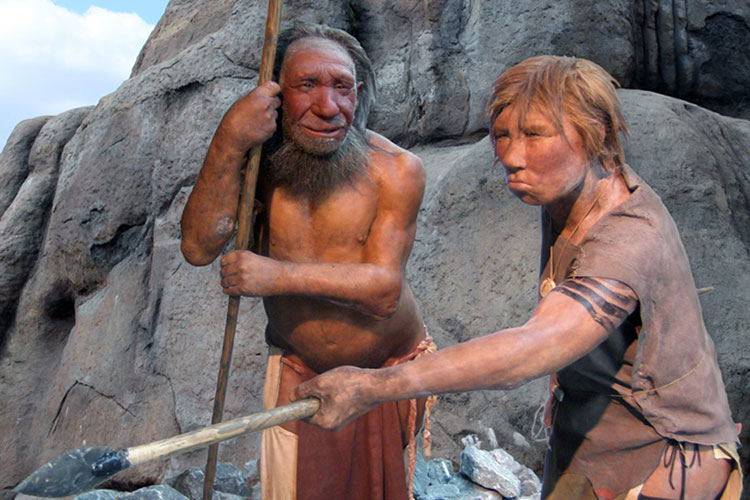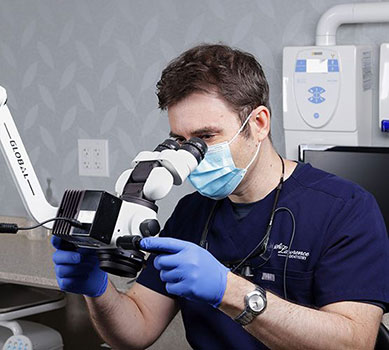The fascinating journey of human evolution isn’t just about standing upright or developing complex language systems – it’s also about how our teeth have evolved.
At St. Lawrence Dentistry, we always strive to foster an environment of understanding and curiosity. Hence, we have taken the initiative to elaborate on this topic, taking you back one million years to understand the dental health of our early ancestors.
The Dental Blueprint of Prehistoric Humans
Roughly one million years ago, our ancestors, collectively called hominids, sported a somewhat different dental setup than modern humans. Their teeth were large and robust, with prominent canines and third molars or wisdom teeth. Wisdom teeth were vital for our ancestors as their diet primarily consisted of tough, raw food that required active chewing.

Their cranial capacity, an indicator of brain size, was significantly smaller than today’s humans, averaging around 500-750 cubic centimeters. Despite the lower cranial capacity, prehistoric humans showed basic problem-solving capabilities and tool use, though the concept of oral hygiene, as we understand it today, did not exist.
Changes Over Time: Diet, Brain Size, and Teeth
As hominids evolved, dietary changes spurred by the advent of cooking and tool use led to substantial alterations in our dental anatomy. With softer, cooked food, the need for large, robust teeth diminished, so our jaws and teeth started to shrink.
Simultaneously, our brain size increased, with the cranial capacity of modern Homo sapiens averaging 1350-1450 cubic centimeters. This expansion in brain size, and consequently intellect, allowed us to develop more sophisticated tools, fostering changes in diet and lifestyle. It also laid the groundwork for understanding health and hygiene, though the concept of oral care still needed to be developed.
Impact on Oral Hygiene
Diet and lifestyle were the primary influencers of the dental health of prehistoric humans, not their cognitive abilities. Dental issues such as cavities were infrequent, primarily because their diet was low in sugars. However, tooth wear was common due to the gritty nature of their diet, and tooth loss was often a result of this wear.
Tooth abscesses, a significant cause of death in prehistoric times, were common and could be fatal if the infection spread. Given the lack of modern medicine, prehistoric humans didn’t have much in the way of treating such ailments.

Modern Dentistry: A Game-Changer
Today, with advancements in oral care and understanding of dental health, many of the dental issues faced by our ancestors can be prevented or treated effectively. The advent of modern dentistry would have been a boon for our ancestors, mitigating risks of tooth abscesses, infections, and subsequent infections.
Contemporary studies suggest that the incidence of wisdom teeth in humans is declining, with 35% of people born without wisdom teeth8. This phenomenon is another step in our evolutionary journey, possibly driven by our changing diets and diminished need for these extra grinding molars.
Conclusion
Understanding our dental past offers valuable insights into oral health and hygiene evolution. While the journey from robust, wear-resistant teeth to smaller, more refined ones align with dietary and lifestyle changes over the millennia, it also highlights the significance of modern dentistry in managing and preventing dental issues. At St. Lawrence Dentistry, we are proud to be a part of this ongoing journey, ensuring the best oral health care for our patients.
Reference:
Footnotes
- “Tooth size and morphology in the early Pleistocene hominid,” Journal of Human Evolution, 2001.
- “Endocranial capacity of early hominids,” Science, 2004.
- “The early stone age tools of Africa and tool-using by early hominids,” Scientific American, 2002.
- “How cooking changed the evolution of the human skull,” Journal of Human Evolution, 2019.
- “Earliest evidence of dental caries manipulation in the Late Upper Palaeolithic,” Scientific Reports, 2015.
- “Evidence of a Neanderthal-period orthodontic treatment,” Acta Biomaterialia, 2017.
- “Dental health and mortality in the prehistoric period,” J Oral Maxillofac Res, 2015.
- “Third molar agenesis: A continuing enigma in human evolution,” Journal of Oral and Maxillofacial Surgery, 2008.
- St. Lawrence Dentistry Looks Forward To St. Patrick’s Day! - March 12, 2025
- Understanding Dental X-Rays and Radiation: What You Should Know - January 13, 2025
- Happy New Year from St. Lawrence Dentistry! - December 30, 2024











